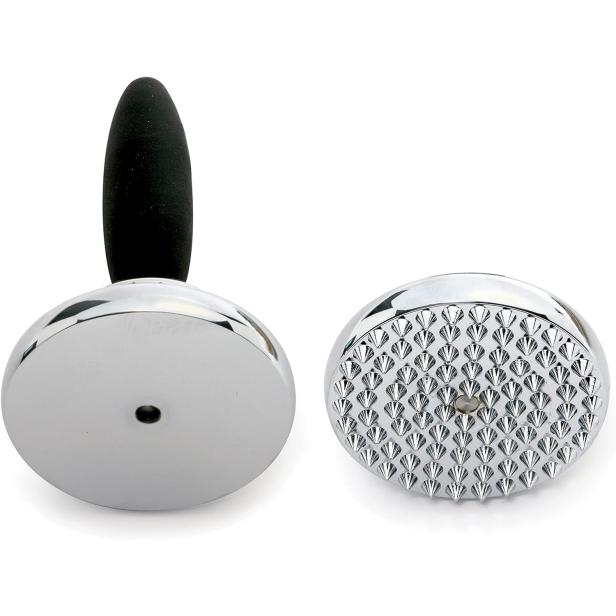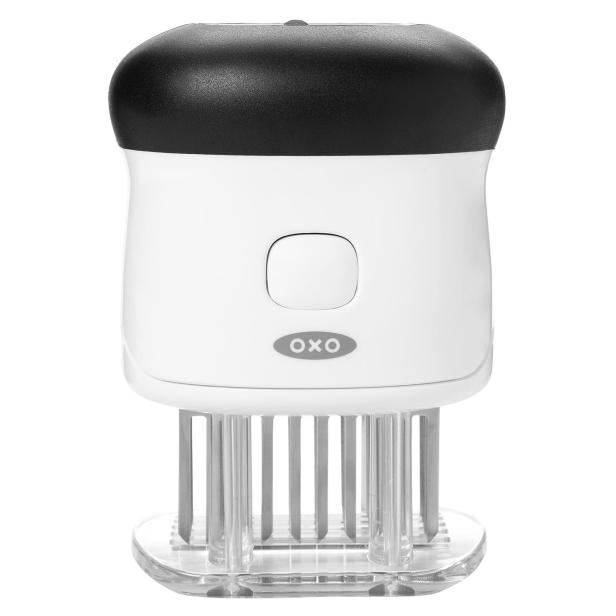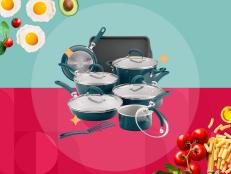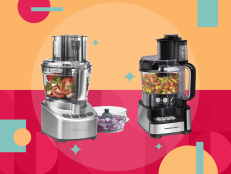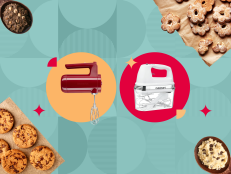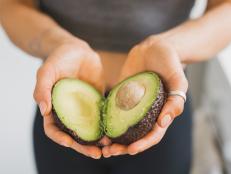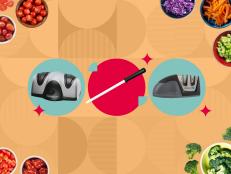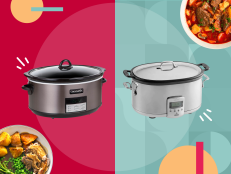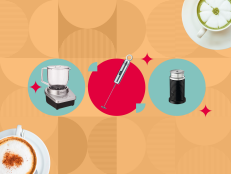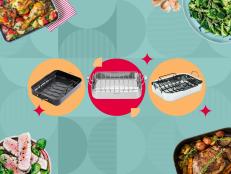3 Best Meat Tenderizers of 2024, Tested and Reviewed
Meat tenderizers can be used to pound meat thin or distribute flavor throughout. Which style you choose depends on your cooking needs.
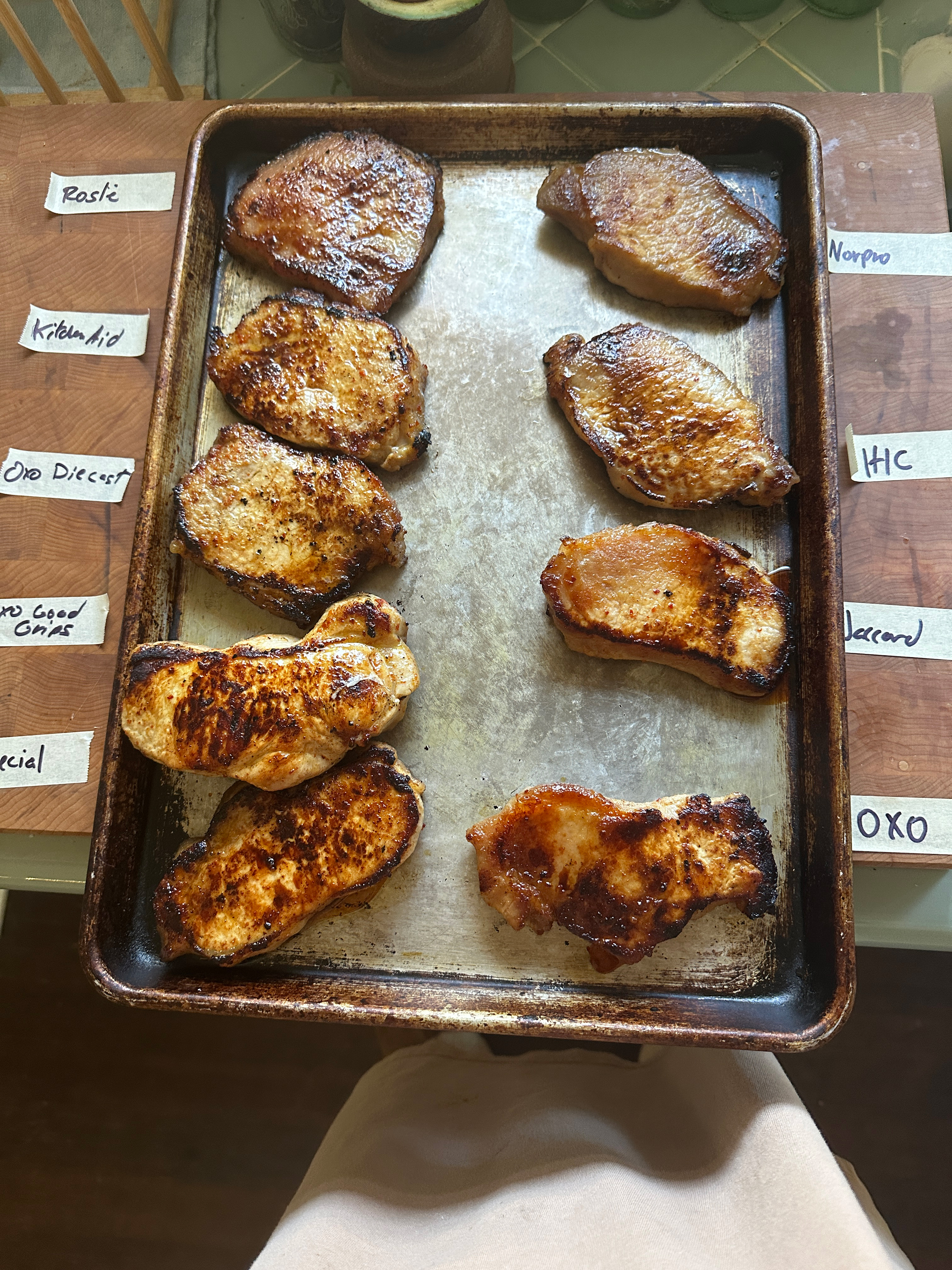
Taylor Murray
Our Top Meat Tenderizer Picks
- Best Overall (and Best Mallet-Style Meat Tenderizer): OXO Good Grips Die Cast Meat Tenderizer
- Best Short-Handle Meat Tenderizer: Norpro GRIP-EZ Tenderizer Pounder
- Best Blade Meat Tenderizer: OXO Good Grips Bladed Meat Tenderizer
Tested by Taylor Murray for Food Network Kitchen
Meat tenderizers are tools designed to soften meat, making it easier to cut, chew, and digest. This process also allows the meat to absorb marinades, seasonings, and flavors better. In addition to meat, these tools can also be used for things like crushing crackers or ice or breaking open crab claws. Most people can find a use for this tool regularly, but choosing the best one for your needs will come down to personal habits. Meat tenderizers come in a variety of styles and price points. We tested a variety of meat tenderizers in mallet-styles and blade-styles to find the best three meat tenderizers for most home cooks.
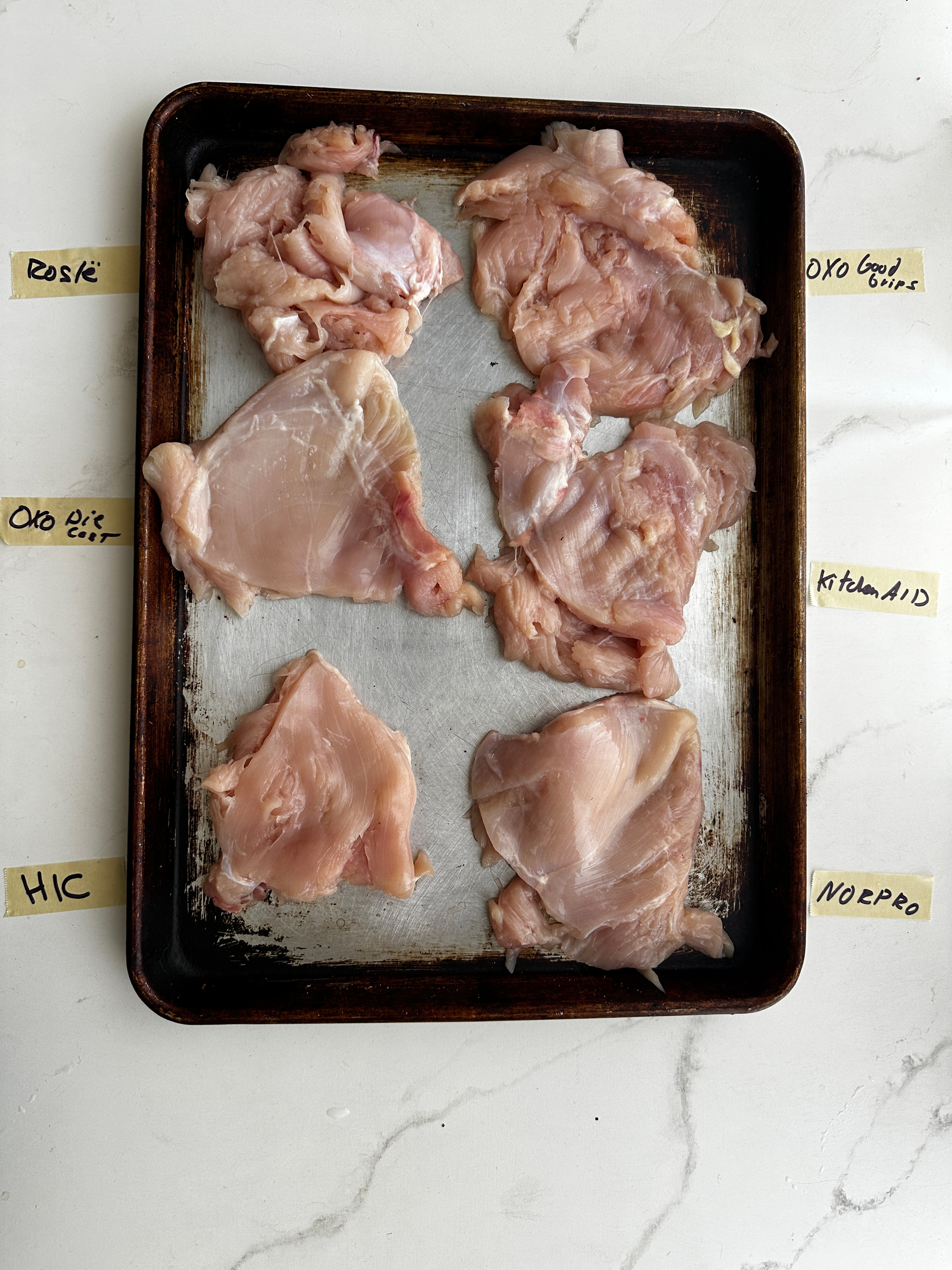
Taylor Murray
How We Tested
Given the sheer number of meat tenderizers available today, we streamlined our testing to focus on tools that emphasize the most flexibility. Our selection process led us to identify nine tools for the test, taking into account factors like popularity, customer reviews, price point, and additional features.
We carefully reviewed each tenderizer's manual, assessing its quality and the level of detail provided. While some manuals were comprehensive and easy to comprehend, others barely covered the essentials. Key attributes of each tool, including its size, weight, special features, and whether it was dishwasher-safe, were also noted.
We conducted the testing in two phases. In the first test, we used each tool to pound a 3-ounce piece of chicken breast until it was 1/4-inch thick. This first test allowed us to assess the tool's pounding capacity and speed and the evenness and ease with which it could flatten the meat.
Next, we used the tools to tenderize an inch-thick boneless pork chop. The tenderized pork was then marinated in an acid-based marinade for three hours and cooked in a cast-iron pan. This allowed us to evaluate the tool's tenderizing effectiveness, specifically how tender the pork chop became after marinating and cooking and how deeply the marinade penetrated.
Following the testing, we meticulously cleaned each tenderizer from top to bottom, identifying any problematic areas to clean. For dishwasher-safe models, we washed them to ensure they could withstand the dishwasher's process without damage. For those that weren't, we wiped them down thoroughly. This final step provided insights into the maintenance and durability of each tenderizer.
The OXO Die Cast was better at pounding out chicken without bruising or tearing the flesh than any other mallet tenderizer we tested. This is likely due to the rounded edges on the flat side of the mallet, which prevented it from leaving divots or impressions. Even though it took a bit longer to pound out the chicken with this mallet, you won't get tired out thanks to an efficiently designed angled head. It's lightweight and has a comfortable, oval-shaped handle that's easy to grip and won't slip. The pyramidal teeth proved to be particularly useful at tenderizing the pork, and the marinade was able to penetrate, allowing delicious flavor inside deeply. While it's not dishwasher-safe, we had no problem cleaning it squeaky.
Made from easy-to-clean chrome-plated zinc, the Norpro Tenderizer did exceptionally well in our testing.
The short, ergonomic handle is designed to screw onto the substantial disc base in two orientations, allowing the choice of either a flat or tenderizing surface to face downwards. When it came to pounding out meat, the Norpro performed the best of any tenderizer, achieving a uniform result with minimal tearing or ripping of the meat, courtesy of its broad, 3.5-inch disc. It accomplished the task quickly, too, transforming a 3-ounce chicken breast into a 1/4-inch thickness in a mere 18 seconds. Its handle is rounded for a comfortable grip and coated in Santoprene to reduce slippage, It's dishwasher-safe, and with a price tag of $22, it won't break the bank. A few downsides: the interchangeable tenderizing/flat head design may require some disassembly for thorough cleaning. Also, the sharp edges on the tenderizing surface could pose handling challenges.
When it came to bladed meat tenderizers, the OXO Good Grips model stood out for a variety of reasons. Firstly, it packs 50 blades into a small, compact size that's easy to store. The sharp, durable blades easily penetrated the pork chops we tested, while other models required more effort to use. The built-in toggle lock ensures you won't get poked accidentally without employing a separate cover that could get lost over time. The contoured shape and non-slip grip handle impressed us the most. Despite being the smallest of this type that we tested, the design offers the most control and allows you to put greater leverage over the center of your palm. This led to faster, easier tenderizing in less time. Cleaning and maintenance are made easier with a removable top, which ensures no little bits are trapped in hard-to-reach places. Best of all, it's dishwasher-safe, so you don't have to worry about cleaning by hand at all if you don't want to.
What's the Difference Between a Meat Tenderizer and Meat Pounder?
Meat pounders tend to come in two types (mallet-style and short-handle-style) and can be used to pound meat thin and tenderize meat. Mallet-types — think hammer with a two-sided head — have a flat side for pounding, and the other side has teeth for tenderizing. Then, there are short handle-style tenderizers that feature a heavy puck and a short, stubby handle poking out of the middle. The puck is double-sided, much the same as the mallet type, so it can be used for pounding or tenderizing. The mallet types are easier to store and clean, but the smaller head can be slower at pounding and more likely to tear meat instead of making it thin.
Blade-style meat tenderizers don't pound meat flat at all. They are made with thin blades designed to puncture meat, breaking down the tough connective tissues in the process. When these sharp components penetrate the meat, they sever long muscle fibers and soften the collagen in the connective tissue, making the meat more tender. The process also creates small channels in the meat, which can increase the meat's capacity to absorb marinades or other flavorings. It's a quick and effective way to tenderize tougher cuts of meat and can even help to reduce cooking times by allowing heat to penetrate more quickly and evenly.

Taylor Murray
What to Consider Before Buying a Meat Tenderizer
We found in testing that the best meat tenderizer for versatile home cooking would be a mallet-style pounder. This variety can do more than just tenderizing meats such as pork and chicken cutlets; it can also be used to crush items like graham crackers or tackle tasks like cracking lobster shells and smashing garlic cloves.
For this type, a heavier mallet head and a lighter handle strike a beneficial balance, offering a powerful swing that requires less effort. Most people are looking for some precision and accuracy, so an ideal model should have a small pounding surface to provide targeted action, yet not so small that it becomes ineffective or causes dents in the meat.
We also found that mallets with rounded edges were less likely to tear the meat when pounding.
Look for models with rounded handles featuring silicone coverings. They're comfortable to hold for prolonged periods and also ensure an easy grip, mitigating the chances of slippage or accidental drops during use.
If a bladed tenderizer is what you need, it should be durable and sharp, designed with high-quality, rust-resistant materials that can withstand repeated use. Also, consider the number of blades. More blades mean more cuts per punch, producing more tender meat in less time. But remember, it's not just about the quantity; the arrangement of the blades is equally essential. They should be spaced adequately to ensure even tenderizing and optimal flavor penetration without turning the meat into mush.
We liked blade tenderizers with a comfortable, non-slip grip that can safely withstand the pressure exerted during use. Lastly, the tenderizer should be easy to clean. Models that can be disassembled or are dishwasher-safe offer a clear advantage, as they allow for thorough cleaning to prevent leftover meat residues from contaminating future uses.

























